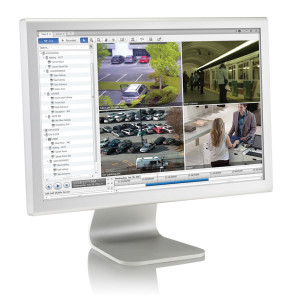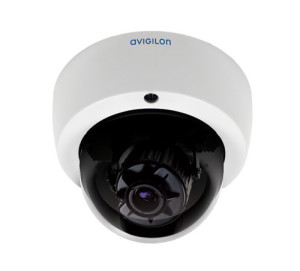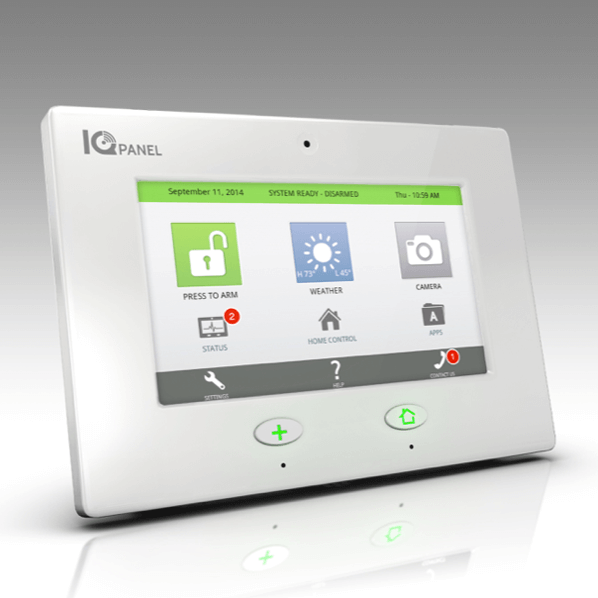Managing the Evolution of Video Surveillance
 The last decade has seen unparalleled advancements in modern security and video surveillance technology. For a company that has been around for at least 10 years and requires highly functioning video surveillance, the upgrades available for a vastly improved system are staggering and most likely confusing. There are quite a few questions that arise when a company considers making the switch from their old-school, analog video surveillance system to a new network video platform.
The last decade has seen unparalleled advancements in modern security and video surveillance technology. For a company that has been around for at least 10 years and requires highly functioning video surveillance, the upgrades available for a vastly improved system are staggering and most likely confusing. There are quite a few questions that arise when a company considers making the switch from their old-school, analog video surveillance system to a new network video platform.
“Disparate systems typically occur over time as systems expand, fail, or come out of service and require replacement. Many times, the new equipment brought in does not interface with the existing equipment already in place. This can occur as new devices are selected from new manufacturers or in many cases when the current manufacturer has released a new platform that is not backward compatible with the existing platform, which creates multiple systems to manage and reduces the overall effectiveness of the equipment and the operator; the result is a reactive versus proactive response to events and an increase in maintenance costs.
Another challenge is how to maintain the capital investment of existing legacy systems that most end-users are not in a position to throw away. The goal of establishing a migration path is to plan for the transition from legacy analog to network video so the full benefit of IP may be recognized in the future, while protecting previous analog hardware and infrastructure investments.
 This can be achieved by pairing technologies to establish the best migration strategy. These technologies can be refined to maximize the potential of your current investments while defining a path for the adoption of future technologies for your systems. When building a network video migration path, it is important to assess the current state of the existing video surveillance platform. This process should include clearly defined objectives, a thorough analysis of the exisitng architecture, and performance and policy requirements.”*
This can be achieved by pairing technologies to establish the best migration strategy. These technologies can be refined to maximize the potential of your current investments while defining a path for the adoption of future technologies for your systems. When building a network video migration path, it is important to assess the current state of the existing video surveillance platform. This process should include clearly defined objectives, a thorough analysis of the exisitng architecture, and performance and policy requirements.”*
“The goal is to build a long-term organizational strategy that complements the existing legacy architecture and builds a technology continuum that supports future technologies.”
Our Approach to Video Surveillance Integration
At BTV Systems, we understand that High Definition Video Surveillance camera systems are only as good as their total system design. With this simple principle in mind, BTV has assembled one of the most proficient system design teams in the Southeast. Our design team consists of network engineers, project managers, public safety professionals, and business professionals, capable of developing a comprehensive and complete video surveillance system to meet any requirements. But most of all, our video surveillance design team is prepared to help you make the best decisions for your company when it comes to ditching or pairing up older parts of your video surveillance systems with new network technology.
To help you understand your needs and options, BTV Systems’ consulting and proposal process can be broken down into three major steps.
- Consultation & Evaluation
- Design & Review
- Demonstration & Deployment
BTV will be completely open with our designs and proposals providing detailed drawings, camera schedules, cut sheets, and line item proposals. BTV’s Systems Consultants will review the entire design and proposal and ensure that you have a full understanding on how your system is designed and priced.
In many cases, BTV will bring the proposed cameras on-site to demonstrate them in their respective locations. This allows you, the customer, to verify that what BTV is proposing is exactly what you expect. Once your video surveillance system is in place, you’ll receive on-site training to achieve maximum benefits and a complete understanding of how it operates.
*Excerpt from Migrating Video to IP: The Benefits and Challenges. Read more of the article.



